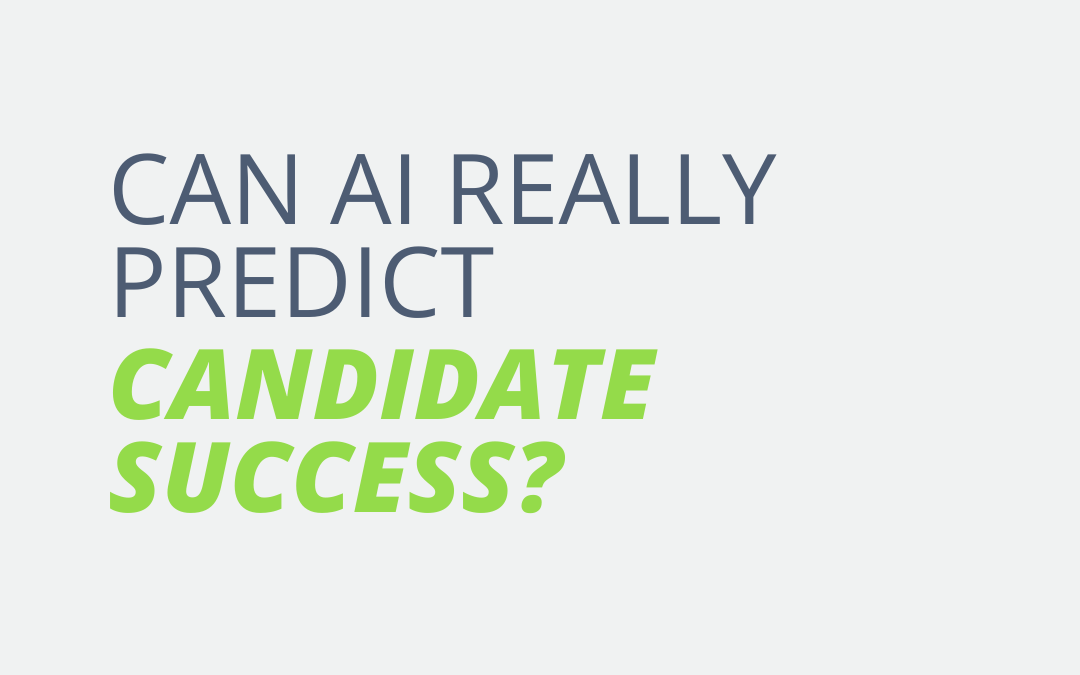Artificial intelligence (AI) has become increasingly popular in the hiring process, with vendors claiming that their algorithms can improve the quality of hire, remove bias, and predict which candidates are most likely to succeed on the job. But do these AI hiring tools really deliver on their bold claims?
This blog post will examine whether AI can accurately and fairly predict candidate success. We’ll look at what these tools actually do, what the research says about their effectiveness, real-world case studies, best practices for implementation, and the future potential of AI in hiring. Our goal is to provide you with an objective perspective on the realities and limitations of AI hiring today, along with recommendations on how to smartly evaluate and pilot these emerging technologies.
What Are AI Hiring Tools?
AI hiring tools use algorithms and data analysis to improve efficiency and find the best candidates for a job. These tools can analyze information such as resumes, skills tests, video interviews, and more to match applicants with open positions that they would be a good fit for.
Some common examples of AI hiring tools include:
-Video Interview Analysis: These tools can analyze a recorded video interview, assessing vocal tone, facial expressions, and word choices. The AI looks for clues that may indicate how well a candidate communicates.
-Resume/CV Parsing: Intelligent algorithms can scan resumes and CVs, extracting key details on skills, experience, and education. The parsed information is structured into a searchable database.
-Skills Testing: Applicants may be asked to complete online tests to demonstrate abilities such as coding, data analysis, writing, or problem solving. AI compares scores to benchmarks to evaluate competence.
Implementing AI Tools
Many companies are eager to implement AI hiring tools to improve efficiency and reduce costs. However, these tools should complement rather than replace existing processes. AI algorithms are only as good as the data they are trained on, so safeguards must be in place to audit for bias and ensure high-quality inputs.
When integrating AI into your hiring process, consider the following:
– Use AI screening early on to filter candidates, but rely on human judgment for final evaluations. Don’t wholesale replace recruiting and interviews.
– Continually audit your AI system’s recommendations for bias.
– Combine AI assessments with other evaluation methods like skills testing, interviews, and reference checks. Layered evaluation improves accuracy.
– Periodically tune your AI tools by validating outputs against real-world outcomes like performance.
Best Practices for Using AI Hiring Tools
If you are considering using AI hiring tools, it is important to do your research and choose a reputable vendor. Here are some best practices to keep in mind:
-Define your goals. What do you hope to achieve by using AI hiring tools?
-Understand the limitations of AI. AI hiring tools are not perfect, and they can be biased.
-Pilot the tools before you roll them out. This will help you to identify any potential problems and make sure that the tools are working as expected.
Use AI in conjunction with human judgment. AI should not be used to replace human decision-making in the hiring process.
The Future of AI in Hiring
AI is still a relatively new technology in the hiring process, but it has the potential to revolutionize the way we hire. As AI technology continues to develop, we can expect to see even more sophisticated and effective hiring tools emerge. However, it is important to use AI responsibly and ethically to ensure that it does not exacerbate bias or discrimination in the hiring process.
